Packing for Long-Term Storage: 13 Tips to Avoid Damage
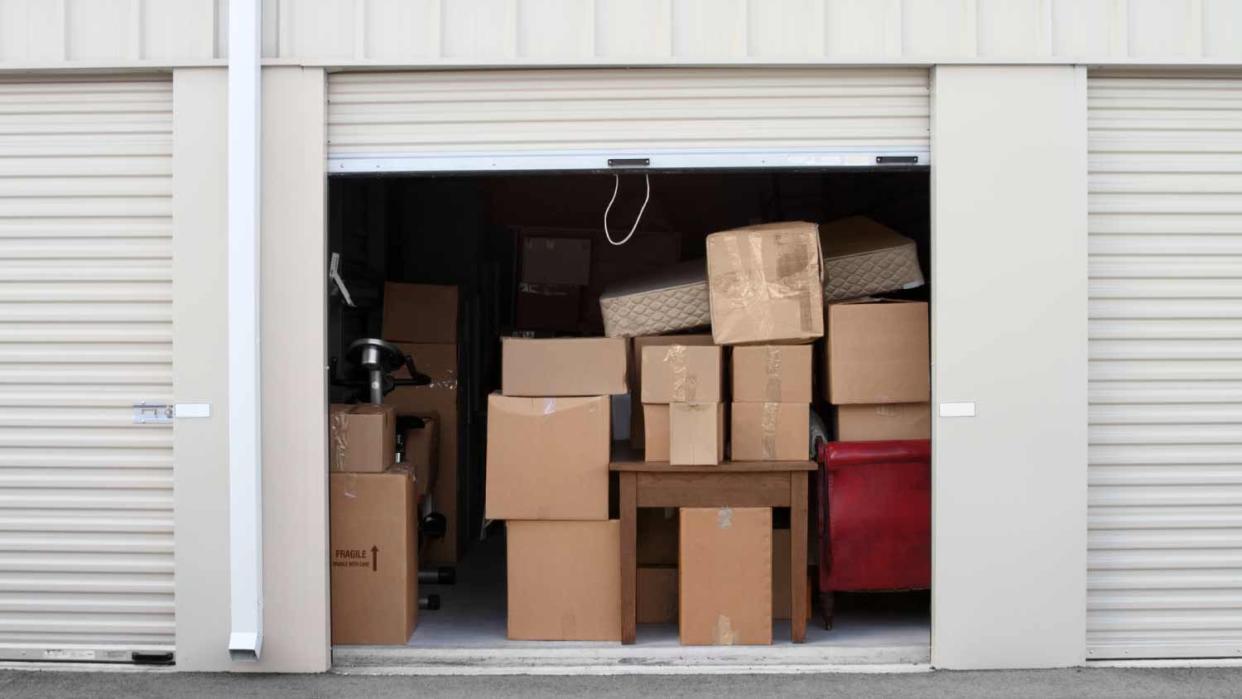
This article originally appeared on Angi and is syndicated by Cheapism.
Picture this: You landed a new job in a new city, and now you need to pack and store your possessions for a few months while you look for a new place to live. Before rush-packing or throwing your items into boxes, consider the best way to preserve them while they’re in long-term storage.
Follow these tips to learn how to pack like a pro, so your furniture, clothing, and kitchenwares stay in peak form while you sort out the details of your big move.

Staying organized is key when packing things up for storage. To determine what size storage unit you'll need, start by making a list of everything you want to store and the items’ size, value, condition, and whether or not it will require a specific storage climate. Now is the best time to sell or donate unwanted or unused items, as the larger the storage unit, the more money you’ll pay for it.
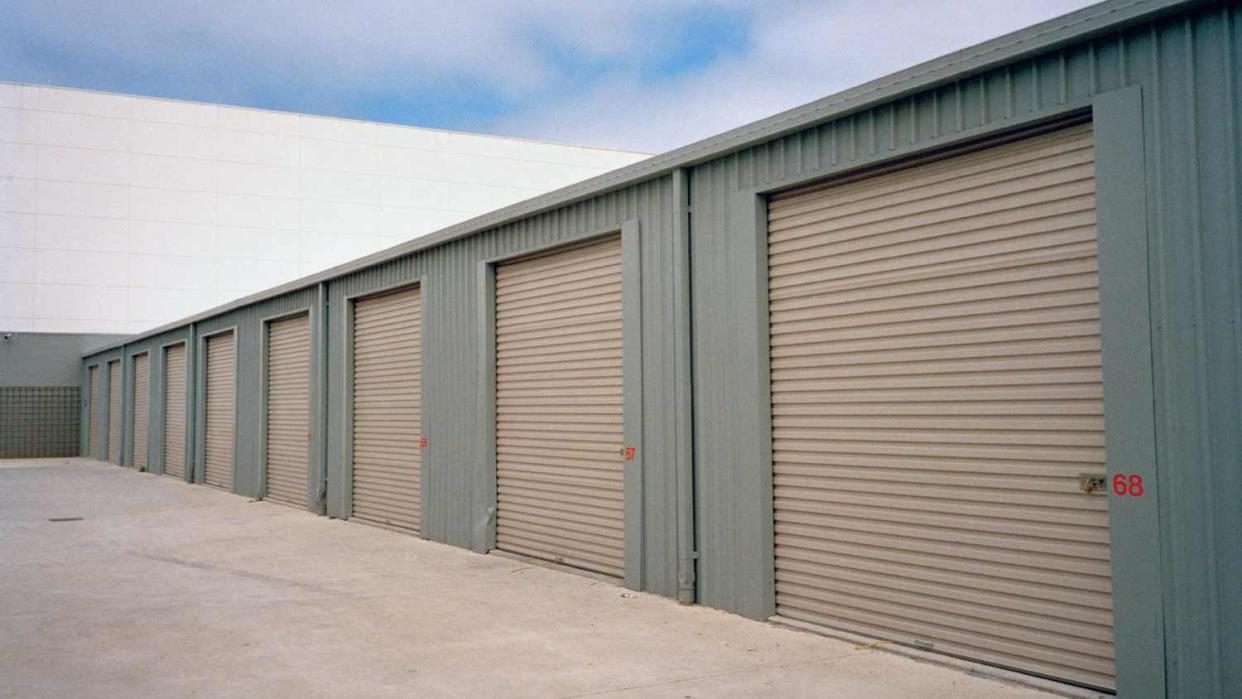
There are several factors to consider when deciding which storage facility to use. Consider these questions before settling on one facility.
How close is the unit to your home?
What are their open hours of operation?
Will you be able to access your things at times convenient to your schedule? If you don’t need access to anything you’re packing away, consider renting a storage vault.
What kind of security does the facility have? Are there cameras and security attendants present at all times?
Does the facility use a pest control company?
How easily can you and the movers get in and out of the unit? Is it on the ground floor or will you need to use an elevator?
Are there discounts for long-term contracts?
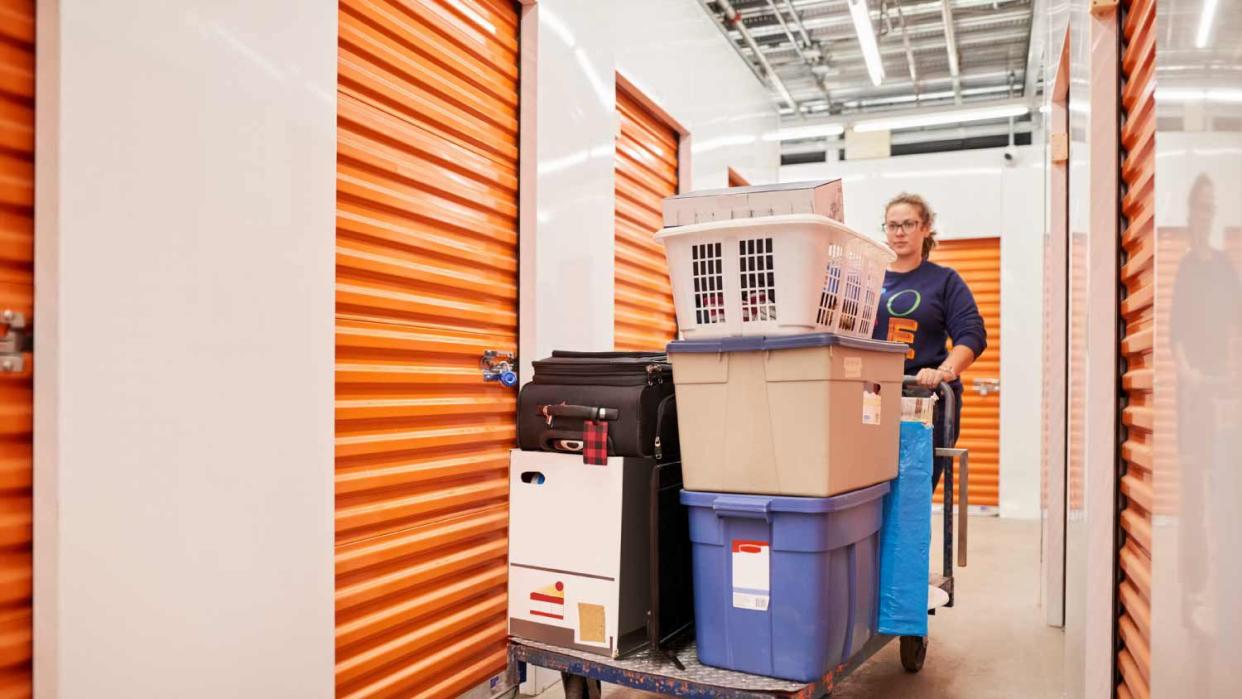
In most cases, your items will benefit from climate-controlled storage. Of course, you’ll pay more for the steady temperature (between 55 and 80 degrees Fahrenheit year-round) and humidity regulation. But your belongings will stay protected from moisture—the main source of damage in storage. Excess moisture sets the stage for mold, rust, warping, deterioration, and discoloration in household goods, including:
Appliances
Artwork
Clothing
Collectibles
Documents
Electronics
Furniture
Photos
Sentimental and valuable items
Wine
The national average cost is about $240 per month to rent a self-storage unit, but you’ll add $25 to $30 per month for climate-controlled facilities. To save a few dollars, consider a non-climate-controlled unit if your items resist moisture damage, such as plastic outdoor furniture. Or, if you only need the unit for a short time, like less than a month in outdoor storage or about three months in indoor storage.
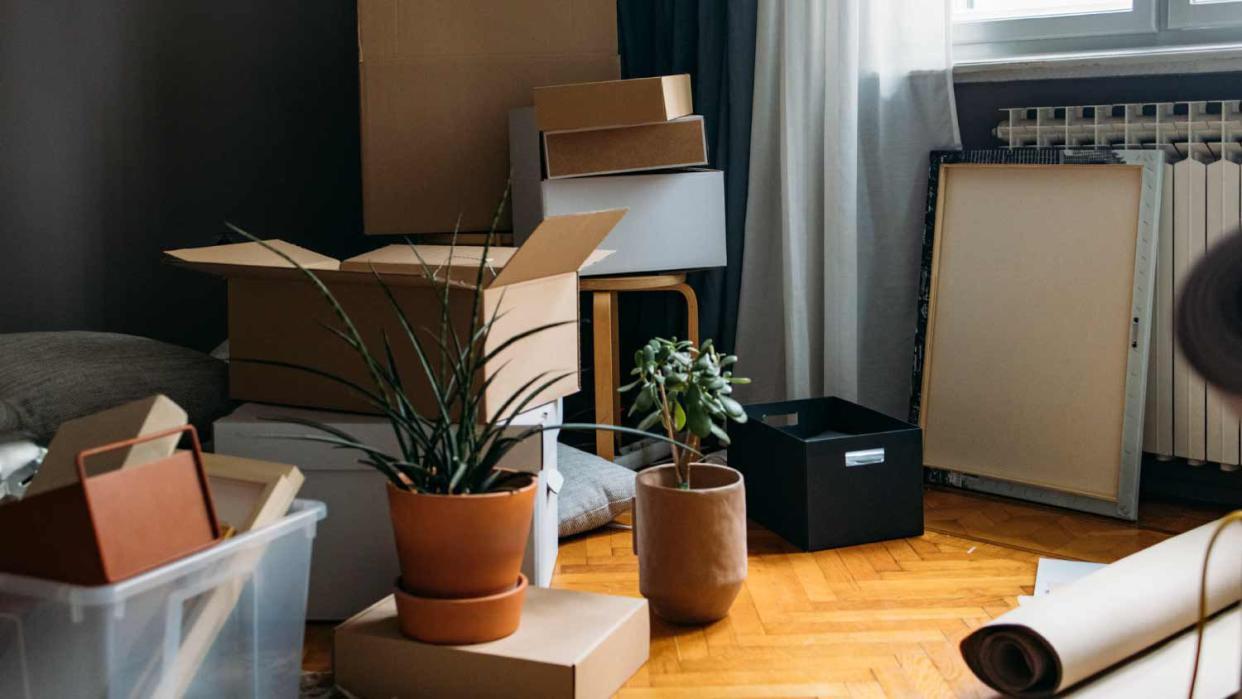
When preparing to move your items to long-term storage, you should purchase new, strong moving boxes that can withstand the test of time. Choose smaller boxes that will be easier to stack in the unit; if you prefer to use clear plastic bins, that works, too—because they are transparent, it will be easier to locate your items in the unit.
Avoid using flimsy plastic bags that can trap moisture, leading to mildew and mold problems. No matter which containers you settle on, always seal them tightly.
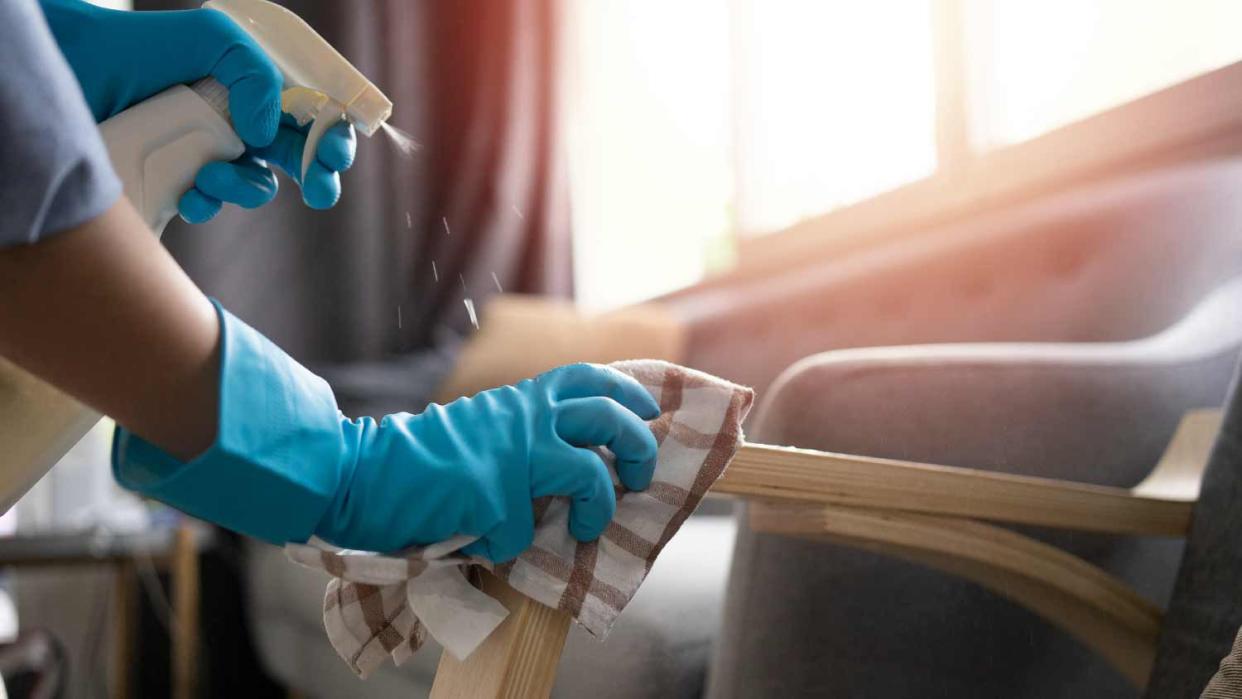
Before throwing your belongings into boxes, prepare your items for their temporary home. Ensure everything is clean and dry, and give any leather items a conditioning treatment before being stowed away. You should also disassemble large pieces of furniture, such as bed frames, as they’ll be easier to neatly pack into the unit.

Don’t forget to find alternate ways to store bigger items that can’t fit inside a box. Follow these guidelines for protecting oversized items.
Furniture
You should disassemble furniture before storing it. Wrap the furniture legs in bubble wrap, with the rest of the piece covered in moving blankets.
Mattresses
Cover your mattress with a mattress storage bag and place it flat inside the unit; placing it on the side could cause damage. Load it securely on top of other boxes to avoid possible water damage.
Electronics
It’s best to pack electronics in their original boxes to help withstand bumpy shipments. If you don’t have the packaging, wrap the item in linen, bubble wrap, or clean packing paper to keep the dust out.
If you’re packing electronics with screens, use non-abrasive padding to protect the glass with a layer of plastic stretch wrap to keep it from moving. Always pack the screens upright and tightly seal the boxes to prevent moisture and dust from getting in.
Appliances
You should defrost, thoroughly sanitize, drain (if applicable), and remove all hoses and wires. Give the appliances a few days to dry out. Inside, use painter’s tape to shut the drawers and avoid damage during the move. Then, secure the doors with plastic stretch wrap. Finally, wrap the appliances in furniture blankets to prevent scratches and dents. Always load appliances upright in the truck and the storage unit.
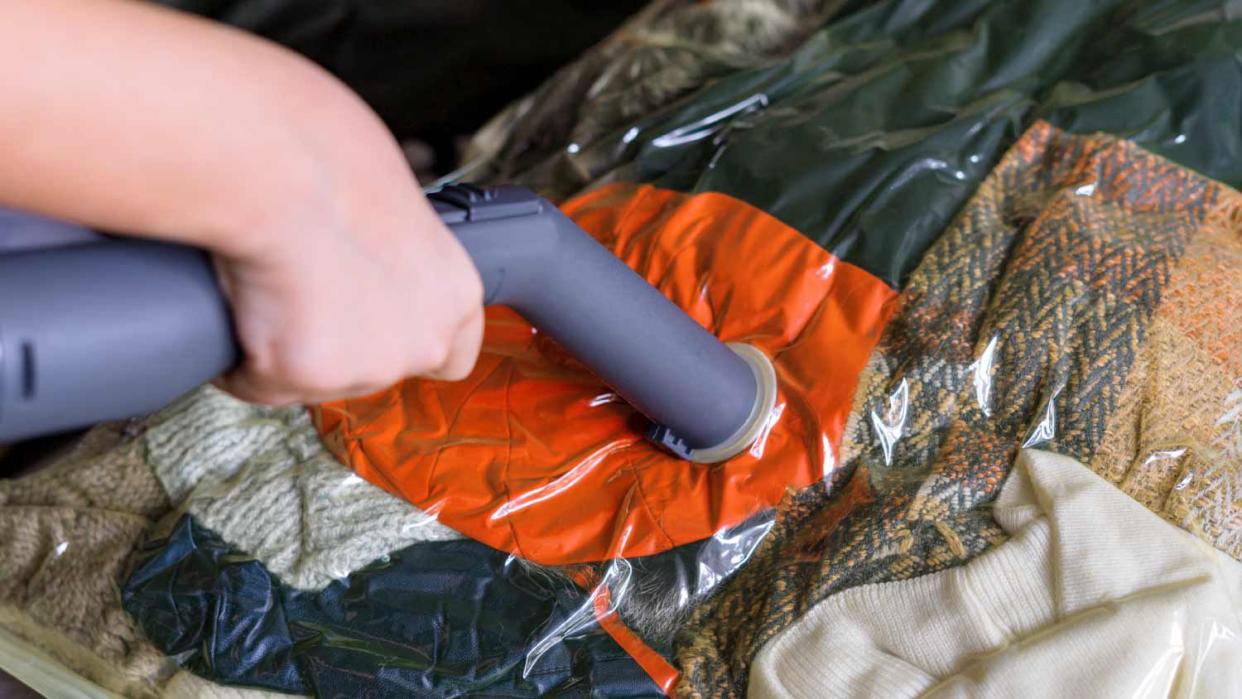
Items like comforters and heavy quilts can take up a lot of space in a storage unit and are at risk of water or pest damage. To ensure these items stay fresh in storage, vacuum-seal bags will reduce the volume of comforters, winter jackets, and other large textiles while keeping them safe from moisture, critters, and other undesirables.
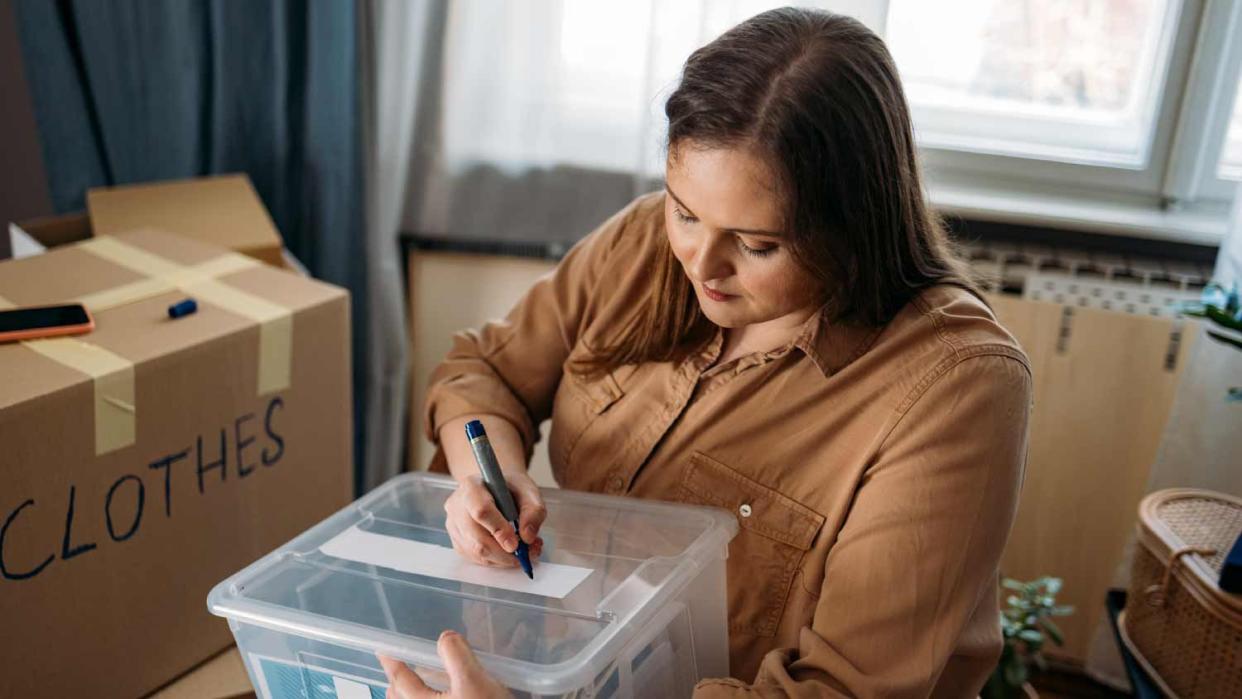
Be very specific about labeling your long-term storage boxes. Instead of simply writing the name of the room the items in the box came from, list the room and the items inside. For example, an accurate label would be “Kitchen: pots, pans, utensils.”
This labeling system will help you quickly locate items in the storage unit. Remember to label the box’s sides, not the top, of boxes so you can see them inside of your unit, and mark anything with special handling instructions in bright permanent marker.
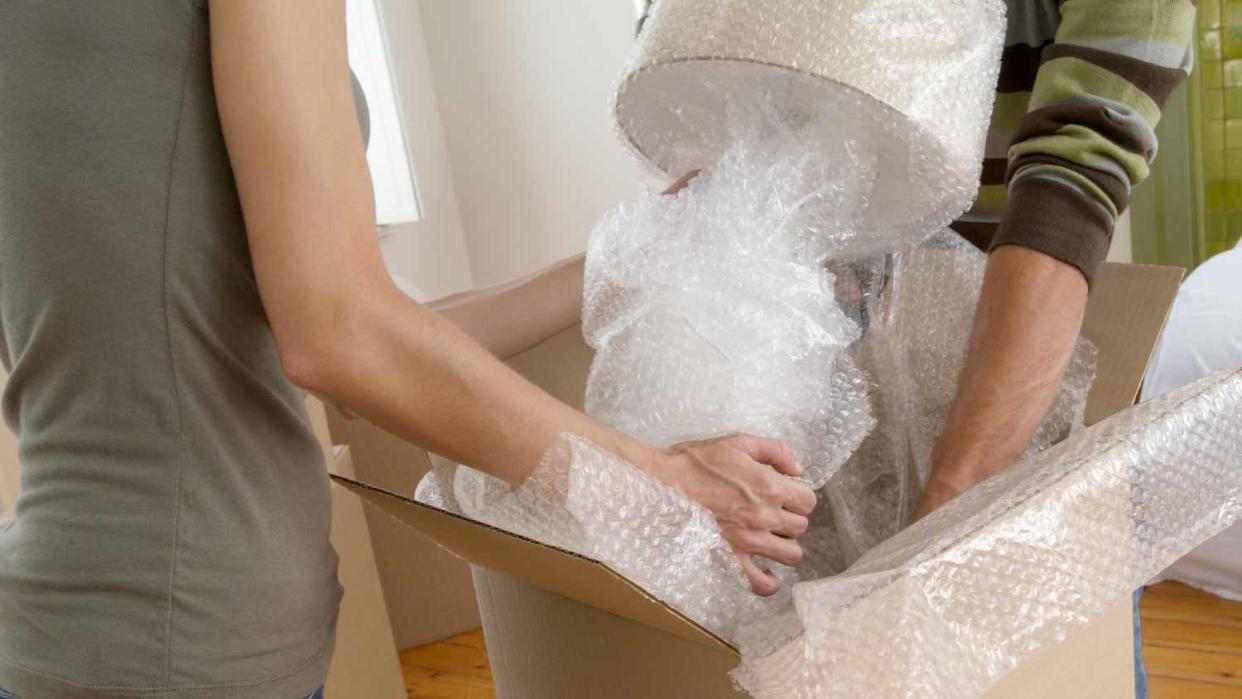
To maximize security and space in each box, line the bottom of the boxes with crushed paper for cushioning and place the heavier, larger items in the bottom of the box before filling them with lighter and smaller things. You should also wrap fragile items in bubble wrap; we don’t recommend newspapers, as the ink can rub off over time. Ensure you don’t overload the boxes so they don’t tear during transit.
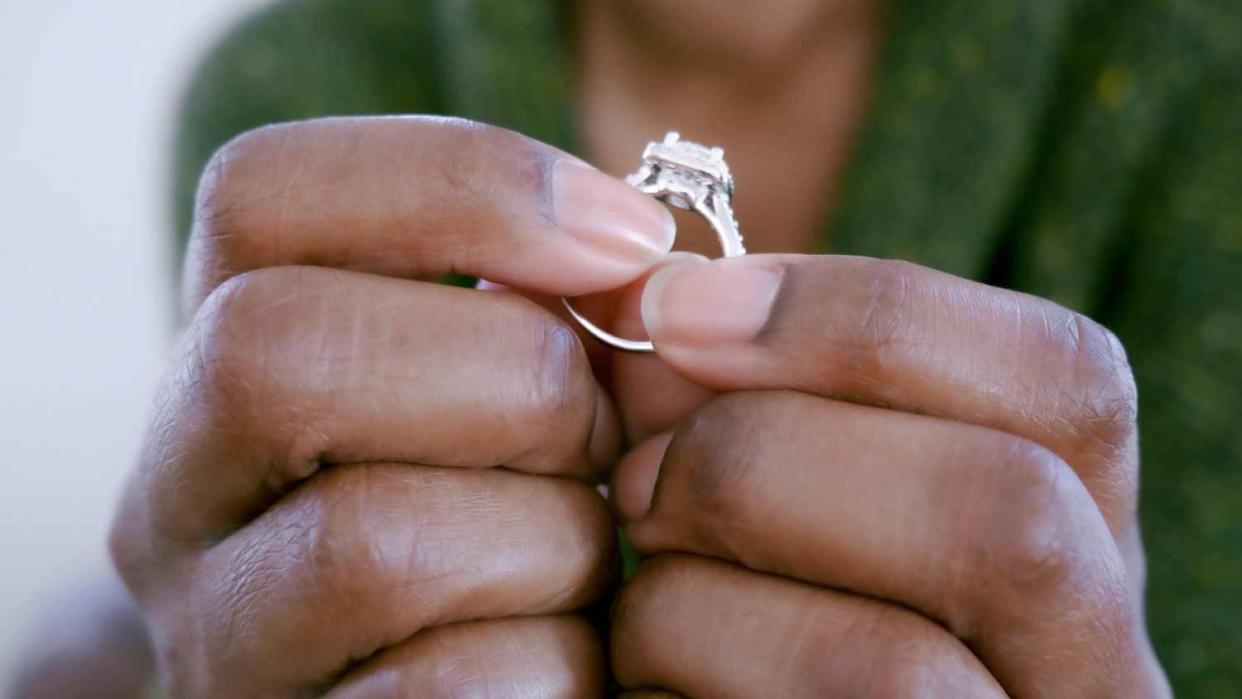
There are certain things you shouldn’t place in long-term storage to eliminate the risk of damage or theft. These types of items include very important documents, valuable jewelry, irreplaceable heirlooms, or anything hazardous or perishable.

Before you load the boxes into your storage unit, place a canvas tarp or plastic sheeting on the floor. This step creates an extra layer between the ground and your things, which helps keep moisture out and minimizes the impact of extreme weather conditions. For extra security, place pallets or cinder blocks on top of the tarp to keep your items off the ground, creating better airflow throughout the unit.

It’s essential to strategize the organization of the storage unit to make it easier to find specific items when you need them. Place large items such as beds, couches, and other furniture in the back of the unit with smaller items in the front. Similarly, you should arrange heavy items on the bottom of the unit with lighter things on top to avoid damaging anything delicate.
Don’t forget to leave a small gap between the items and the walls of the unit to leave room for ventilation and air circulation. As you load the unit, draw a map of where everything is located and digitize it for safekeeping.
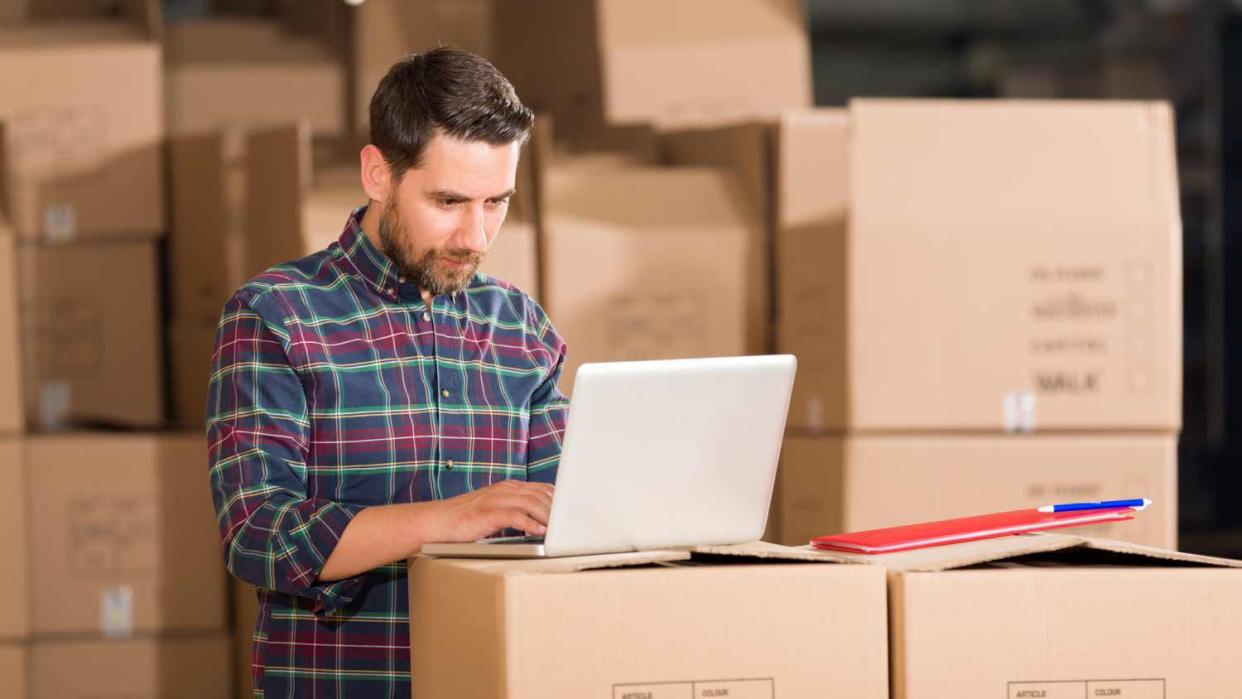
Another step for preparing your items for long-term storage is investigating storage unit insurance (most facilities require coverage to use their site). Insurance protects your items from theft, vandalism, or weather related-damage. It also helps you recover money for replacement or repair.
Look through your renters' or homeowners’ insurance policy; it might include this type of coverage. But read the fine print—insurance often does not cover mold, mildew, or flooding damage. You can also ask your storage unit company about their in-house insurance. Most offer various levels of coverage for monthly fees.
